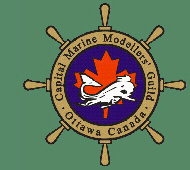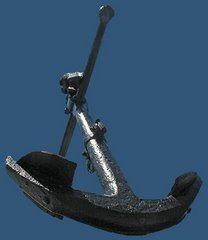St. Andrew's Presbyterian Church
-
St. Andrew's Presbyterian Church occupies the southwest corner of
Wellington Street and Kent Street.
The statue shown below is titled, 'Whatsoever,'...
Friday, September 26, 2014
October 2014 Meeting
The October meeting will be at the Nepean Museum, 16 Rowley Avenue on Tuesday, October 7, 2014, starting at 7:00 p.m.
Wednesday, September 03, 2014
Some Caveats About Wooden Ship Kits
At the September meeting a discussion about wooden ship kits came up. For those interested in building model ships a basic simple wooden ship kit is often an excellent entry point to the hobby. There are a few things the beginner should know before taking on such a project. I will deal with a few of those things here.
The instructions may not be completely helpful. For example, with regard to the hull, the instructions may just say, "plank the hull." With regard to the rigging the instructions may say, "install the rigging." At some point the instructions may say, "complete building the ship." For a beginner, such instructions can be extremely daunting.
More detailed instructions can be found in a number of books. Books written by Harold A. Underhill are extremely helpful. In addition to that there are model ship clubs such as The Capital Marine Modellers' Guild in many communities. Experienced members of such clubs are only too happy to share what they know with others.
When a wooden ship model kit is purchased it is a good idea to check the included materials. I recommend replacing the rigging thread that is included. The rigging line that is provided is more often than not insufficient to complete the rigging of the ship and finding an after market line that matches what is in the kit is often very difficult, if not impossible.
It may be a good idea to replace some of the wood that is provided as well. Usually the wood provided for planking the hull or planking the deck is insufficient to complete the job, unless the modeller is very frugal and careful with it, and again, the modeller may have a difficult time finding after market wood to match what the kit includes.
Most wooden ship kits are one of two types. They either provide a solid wooden hull, often preformed and needing further carving and finishing, or they provide a plank on bulkhead hull. The bulkheads provided are often precut and they are not always symmetrical. Tracing them on paper and folding along the centre line is an easy way to check that and then correct it before building the ship.
Those are not the only problems one may encounter with a beginning wooden ship kit but they are probably the most frequently encountered. I have mentioned them here, so that if you want to begin ship modelling with a wooden ship kit you will be able to avoid some of the early pitfalls and get more enjoyment out of the hobby.
Bill Williams
The instructions may not be completely helpful. For example, with regard to the hull, the instructions may just say, "plank the hull." With regard to the rigging the instructions may say, "install the rigging." At some point the instructions may say, "complete building the ship." For a beginner, such instructions can be extremely daunting.
More detailed instructions can be found in a number of books. Books written by Harold A. Underhill are extremely helpful. In addition to that there are model ship clubs such as The Capital Marine Modellers' Guild in many communities. Experienced members of such clubs are only too happy to share what they know with others.
When a wooden ship model kit is purchased it is a good idea to check the included materials. I recommend replacing the rigging thread that is included. The rigging line that is provided is more often than not insufficient to complete the rigging of the ship and finding an after market line that matches what is in the kit is often very difficult, if not impossible.
It may be a good idea to replace some of the wood that is provided as well. Usually the wood provided for planking the hull or planking the deck is insufficient to complete the job, unless the modeller is very frugal and careful with it, and again, the modeller may have a difficult time finding after market wood to match what the kit includes.
Most wooden ship kits are one of two types. They either provide a solid wooden hull, often preformed and needing further carving and finishing, or they provide a plank on bulkhead hull. The bulkheads provided are often precut and they are not always symmetrical. Tracing them on paper and folding along the centre line is an easy way to check that and then correct it before building the ship.
Those are not the only problems one may encounter with a beginning wooden ship kit but they are probably the most frequently encountered. I have mentioned them here, so that if you want to begin ship modelling with a wooden ship kit you will be able to avoid some of the early pitfalls and get more enjoyment out of the hobby.
Bill Williams
Subscribe to:
Posts (Atom)





